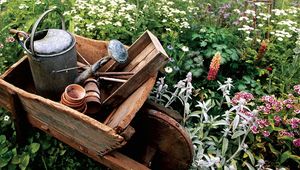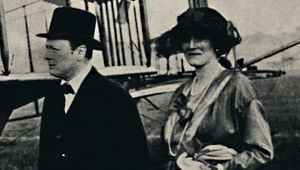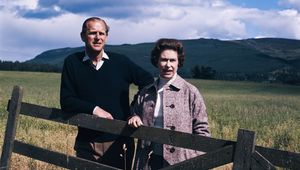
Brunel in Bristol and cheese in Cheltenham
[caption id="InBritainTheseDays_img1" align="aligncenter" width="1024"]

COURTESY OF NATIONAL WATERFRONT MUSEUM, SWANSEA
INDUSTRY AND INNOVATION IN WALES
The official opening of the exciting new National Waterfront Museum in Swansea takes place this October as a part of Trafalgar Week celebrations. It seems a fitting time. After all, the copper plates that sheathed the hulls of the British fleet, making Nelson’s ships faster than their opponents, were cast in Swansea, while the fleet’s guns and cannonballs were cast at Cyfarthfa, then the largest ironworks in the world.
[caption id="InBritainTheseDays_img2" align="aligncenter" width="689"]

MIKE CAPLANIS
Exploitation and optimism, opportunity and danger, grime and high finance: The mission of this major new museum on Swansea’s waterfront is to convey the lasting impact that the Industrial Revolution had upon the life of Wales and its people. Wales was the world’s first industrial nation. By the 1840s, more of its population was engaged in industry than in agriculture, and a previously rural country became known across the world for its mines, tips and steel mills.
[caption id="InBritainTheseDays_img3" align="aligncenter" width="1024"]

COURTESY OF THE INSTITUTION OF CIVIL ENGINEERS
Hailed as the centerpiece of redevelopment for Swansea’s historic waterfront district, the museum is using the latest technology to create an unparalleled interactive experience in Welsh social and industrial history for its anticipated 250,000 visitors a year. Among the discoveries awaiting American visitors is an exhibit on the steel rails produced in Dowlais that opened up the American Midwest in the mid-19th century. Web site: www.waterfrontmuseum.co.uk
THE COMPLETE SHAKESPEARE
The Royal Shakespeare Company (RSC) is beginning work on a temporary theater at its home in Stratford-upon-Avon. The beautiful Royal Shakespeare Theatre on the banks of the River Avon is due for a two-year, £100 million redevelopment beginning in 2007. In the meantime, the 1,000-seat Courtyard Theatre will take the stage as the company’s principal venue. As if this building and rebuilding project were not enough, the Courtyard Theatre will be ready in time for the RSC’s most ambitious theatrical celebration in the company’s history. The Complete Works of Shakespeare Festival will run from April 2006 to April 2007. Web site: www.rsc.org.uk
BRISTOL’S BRUNEL BICENTENARY
Next year marks the 200th anniversary of the birth of the great Victorian engineer Isambard Kingdom Brunel. Steamships, railroads, tunnels and bridges: Brunel’s career made a significant mark on structural, marine, mechanical and civil engineering. In the 2002 BBC poll of greatest Britons, Brunel finished a close second to Winston Churchill as the greatest Brit in history. To this day, trains follow the route of his Great Western Railway from Paddington to Penzanc While the legacy of Brunel’s work can be seen across Britain, the city of Bristol can proudly claim to show off the diversity of his genius like no other locale in the country.
[caption id="InBritainTheseDays_img4" align="aligncenter" width="847"]

HISTORIC ROYAL PALACES/ NEWSLEARN.CO.UK
A yearlong celebration of Brunel’s life and work across the Southwest of England, Brunel 200, finds its fitting epicenter at Bristol. His famous Clifton Suspension Bridge above the Avon Gorge, Bristol Docks, Temple Meads station and SS Great Britain are just a few of the city’s focal points for events planned across the region. Web site: www.brunel200.com
THE PALACE IN THE GARDEN
Historic Kew Palace has been closed to the public for extensive refurbishment. The intimate and elegant royal residence was the country home of King George III and Queen Charlotte from 1800 to 1818. The king spent much of his time convalescing here from his intermittent bouts with madness.
On the grounds of Kew’s famous botanic gardens, the palace’s interiors are being restored to represent the way George III and his family would have known them. New exhibitions, audiovisual guides and a variety of royal memorabilia will include a wax life-cast of George III created by Madame Tussaud herself. Kew Palace is scheduled to reopen for Easter 2006. It makes a wonderful adjunct to a day’s visit at the Royal Botanic Gardens. Web site: www.hrp.org.uk
PREHISTORIC NEWS?
The Dorset and East Devon Coast is England’s first World Heritage Site of outstanding natural importance. Known as the Jurassic Coast, the shoreline from Swanage to Exmouth is the only place on earth where 185 million years of natural history are exposed in cliffs, coves and beaches.
Regular BH readers may remember our recent feature on Mary Anning (“The Princess of Paleontology,” May 2005), whose fossil discoveries along the cliffs of Lyme Regis helped uncover the Mesozoic era of earth’s history, when dinosaurs were the dominant creatures on land and large marine reptiles swam the seas. From Exmouth in East Devon to Old Harry Rocks in Purbeck, the 95-mile coast is an outdoor classroom for geology, geomorphology, geography and biology.
At the heart of the Jurassic Coast lies 17-mile-long Chesil Beach, one of the finest barrier beaches in the world. It protects the Fleet, which is the largest tidal lagoon in Britain and a place of international importance for its birds and marine wildlife. A huge population of waterbirds relies on the lagoon. They include the oldest managed swan population in the world, at the Abbotsbury Swannery near Weymouth. Now, the Jurassic Coast has been recognized as one of the leading examples of responsible tourism. It won the Destination Award at the 2005 Tourism for Tomorrow Awards. Web site: www.jurassiccoast.com
[caption id="InBritainTheseDays_img5" align="aligncenter" width="688"]

KEBLE COLLEGE,OXFORD,UK/BRIDGEMAN ART LIBRAR
‘THE GREATEST PAINTING IN BRITAIN’
Which are the greatest paintings in Britain, and what do they say about Britain as a nation? London’s National Gallery and BBC Radio Four’s Today Programme have teamed up to find out, or at least to put the question forward for national discussion. Conceived as the UK’s biggest interactive event for the visual arts, “The Greatest Painting in Britain” is believed to be the first ever national poll of paintings to be held anywhere in the world.
“With recently expanded galleries in Bristol, Gateshead, London, Manchester, Salford and Southampton seeing record attendances, and exhibitions in London attracting attention from around the world,” says Charles Saumarez Smith, director of the National Gallery, “there has never been a better time to celebrate the country’s rich heritage and discover which of our paintings move us the most.”
Throughout the summer, the public has been invited to contribute to the debate: What is a “great” painting? How can one painting be “greater” than another? Can any painting really be the “greatest ”? The Today Programme Web site provides the forum for nominations and discussion; visitors to the site can vote for their favorite painting and join the dialogue. When the poll winners are announced this autumn, British Heritage will bring you the results. Perhaps we ought to conduct a poll of BH readers. What are the greatest paintings in Britain? Web site: www.bbc.co.uk/today
[caption id="InBritainTheseDays_img6" align="aligncenter" width="644"]

CHARLOTTEWOOD
JERWOOD CENTRE AT THE WORDSWORTH TRUST
The Jerwood Centre at the Wordsworth Trust opened this summer at Dove Cottage in Grasmere, Cumbria. The newly constructed building provides a state-of-the-art home for the collection of 60,000 manuscripts, books and artwork cared for by the Wordsworth Trust. The catalog includes all the major collections related to the great Romantic poet William Wordsworth, his sister Dorothy and contemporaries such as Samuel Taylor Coleridge, Robert Southey and Thomas De Quincey.
Home to Wordsworth from 1799 to 1808, Dove Cottage enjoys the distinction of having been the site from which the poet penned some of his finest works. Wordsworth himself called them years of “plain living, but high thinking.” More than 70,000 visitors a year make the pilgrimage here to the Lake District site that has become so identified with the influential poet.
The Rt. Hon. Tessa Jowell, secretary of state for culture, media and sport, said: “The Jerwood Centre will help to safeguard the long term future of the significant historic assets of Cumbria. It is an excellent example of how cultural heritage can be a driving force for regeneration, economic diversification and growth.” Web site: www.wordsworth trust.org.uk
BIG CHEESE IN THE COTSWOLDS
Cheese lovers from around the world will gather this October in the lovely Gloucestershire market town of Cheltenham for the 12th annual Great British Cheese Festival. The popular festival offers the opportunity to see, taste and buy more than 1,000 British cheeses. Master classes, workshops and cooking demonstrations at venues throughout the town offer visitors the opportunity to discover the best in British cheese, wine, beer and other regional foods. More than 800 cheeses are expected to compete in the annual British Cheese Awards. The principal public attraction, however, is apt to be Britain’s Biggest Cheese Market, where more than 450 cheeses will be available for sample and purchase from cheese makers representing Britain and Ireland. Web site: www.thecheese web.com





Comments